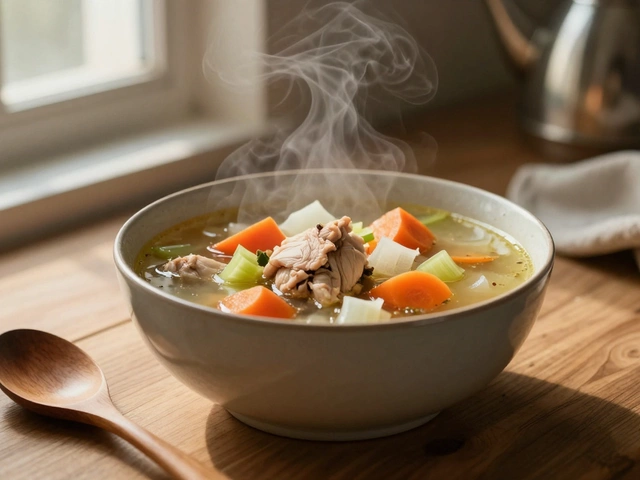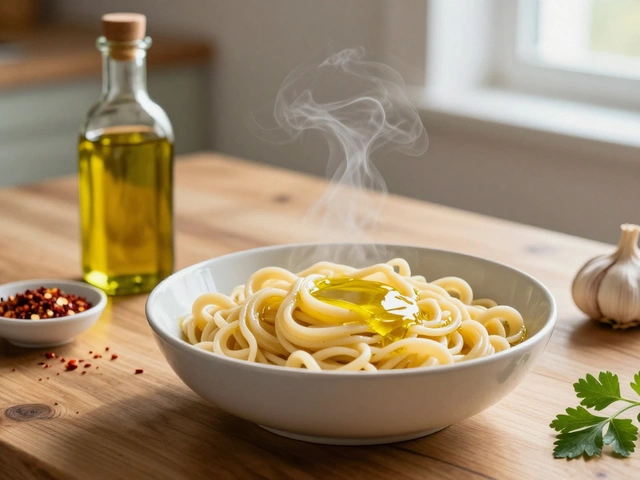Meat‑Like Foods: Easy Plant‑Based Picks and Safe Cooking Tips
Looking for foods that give you the chew and flavor of meat without the hassle? You’re in the right place. Below you’ll find the best plant‑based options that act like meat, plus quick safety tricks for real meat. Let’s make your meals tasty and worry‑free.
Top Plant‑Based Foods That Feel Like Meat
First up, beans. Black beans, chickpeas, and lentils soak up spices and hold together when you mash or form them into patties. Add a splash of soy sauce and some smoked paprika, and you’ve got a burger that tastes surprisingly meaty.
Next, try tofu and tempeh. Press tofu to squeeze out water, then marinate it in garlic, ginger, and a dash of chili oil. Grill or pan‑fry until golden and you’ll get a crisp outside with a soft, protein‑rich center. Tempeh already has a nutty bite; crumble it and stir‑fry with veggies for a quick “mince” style dish.
Seitan is another go‑to. Made from wheat gluten, it has a dense, fibrous texture that mimics chicken or beef. Slice it thin for a stir‑fry, or shred it for tacos. Just remember to season well — the plain flavor can be bland.
If you’re curious about newer options, look at pea‑protein “meat” strips or mycoprotein (the stuff behind Quorn). Both cook fast, need only a splash of oil, and give you that satisfying bite on salads or in pasta.
Keeping Real Meat Safe in Your Kitchen
Even if you love plant‑based meals, you’ll still handle real meat sometimes. The biggest mistake is leaving meat in the slow cooker on the warm setting overnight. That can let it sit in the danger zone (40‑140°F) and grow bacteria. If you need to keep something warm, set the cooker to “low” and serve within two hours.
When using a crockpot, add raw chicken or beef at the start of the cooking cycle. The heat will reach safe levels by the end, but never drop raw meat in a pot that’s already been cooking. This prevents uneven cooking and reduces the risk of foodborne illness.
Another tip: always check the internal temperature. For chicken, aim for 165°F; for beef or pork, 145°F with a three‑minute rest. A cheap instant‑read thermometer should be your kitchen sidekick.
Finally, if you’re using baking soda as a meat tenderizer, rinse the meat thoroughly before cooking. Leftover soda can affect flavor and texture, and in large amounts it may cause a slight off‑taste.
Mixing plant‑based and animal proteins can give you the best of both worlds. Try a bean‑chili topped with shredded chicken, or a tofu‑stir‑fry with a few strips of seitan for extra chew. Experiment, season well, and keep safety top of mind.
Now you have a short list of meat‑like foods to try and solid safety rules for real meat. Grab a pan, a pot, or a slow cooker and start cooking. Your taste buds and your stomach will thank you.

What Tastes Like Meat but Is Not Meat? The Ultimate Guide to Meaty Vegetarian Recipes
by Landon Weathers / 18 Apr 2025Ever wanted a burger or stir-fry that tastes like meat but skips the animal part? This article breaks down the best vegetarian swaps that deliver on flavor and texture. From mushrooms to soy, you’ll get the lowdown on what makes these options taste satisfyingly close to real meat. Expect tips, tricks, and recipes that work even for picky eaters. Get ready to fool your tastebuds, not your principles.




